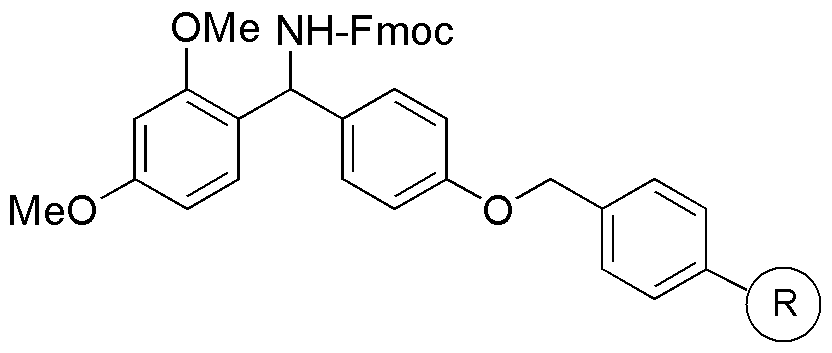Rink amide resin is widely utilized in research focused on:
- Peptide Synthesis: This resin is essential for solid-phase peptide synthesis, allowing researchers to efficiently create peptides with high purity and yield.
- Drug Development: Used in the pharmaceutical industry, it aids in the development of peptide-based drugs, offering a reliable platform for screening potential therapeutic candidates.
- Bioconjugation: The resin facilitates the attachment of peptides to various biomolecules, enhancing the development of targeted drug delivery systems and diagnostic tools.
- Research in Proteomics: It plays a crucial role in proteomics studies, enabling the isolation and characterization of proteins through peptide mapping techniques.
- Customization of Peptide Libraries: This resin allows for the creation of diverse peptide libraries, which are invaluable in identifying new bioactive compounds and understanding protein interactions.
General Information
Properties
Safety and Regulations
Applications
Rink amide resin is widely utilized in research focused on:
- Peptide Synthesis: This resin is essential for solid-phase peptide synthesis, allowing researchers to efficiently create peptides with high purity and yield.
- Drug Development: Used in the pharmaceutical industry, it aids in the development of peptide-based drugs, offering a reliable platform for screening potential therapeutic candidates.
- Bioconjugation: The resin facilitates the attachment of peptides to various biomolecules, enhancing the development of targeted drug delivery systems and diagnostic tools.
- Research in Proteomics: It plays a crucial role in proteomics studies, enabling the isolation and characterization of proteins through peptide mapping techniques.
- Customization of Peptide Libraries: This resin allows for the creation of diverse peptide libraries, which are invaluable in identifying new bioactive compounds and understanding protein interactions.
Documents
Safety Data Sheets (SDS)
The SDS provides comprehensive safety information on handling, storage, and disposal of the product.
Product Specification (PS)
The PS provides a comprehensive breakdown of the product’s properties, including chemical composition, physical state, purity, and storage requirements. It also details acceptable quality ranges and the product's intended applications.
Certificates of Analysis (COA)
Search for Certificates of Analysis (COA) by entering the products Lot Number. Lot and Batch Numbers can be found on a product’s label following the words ‘Lot’ or ‘Batch’.
*Catalog Number
*Lot Number
Certificates Of Origin (COO)
This COO confirms the country where the product was manufactured, and also details the materials and components used in it and whether it is derived from natural, synthetic, or other specific sources. This certificate may be required for customs, trade, and regulatory compliance.
*Catalog Number
*Lot Number
Safety Data Sheets (SDS)
The SDS provides comprehensive safety information on handling, storage, and disposal of the product.
DownloadProduct Specification (PS)
The PS provides a comprehensive breakdown of the product’s properties, including chemical composition, physical state, purity, and storage requirements. It also details acceptable quality ranges and the product's intended applications.
DownloadCertificates of Analysis (COA)
Search for Certificates of Analysis (COA) by entering the products Lot Number. Lot and Batch Numbers can be found on a product’s label following the words ‘Lot’ or ‘Batch’.
*Catalog Number
*Lot Number
Certificates Of Origin (COO)
This COO confirms the country where the product was manufactured, and also details the materials and components used in it and whether it is derived from natural, synthetic, or other specific sources. This certificate may be required for customs, trade, and regulatory compliance.

